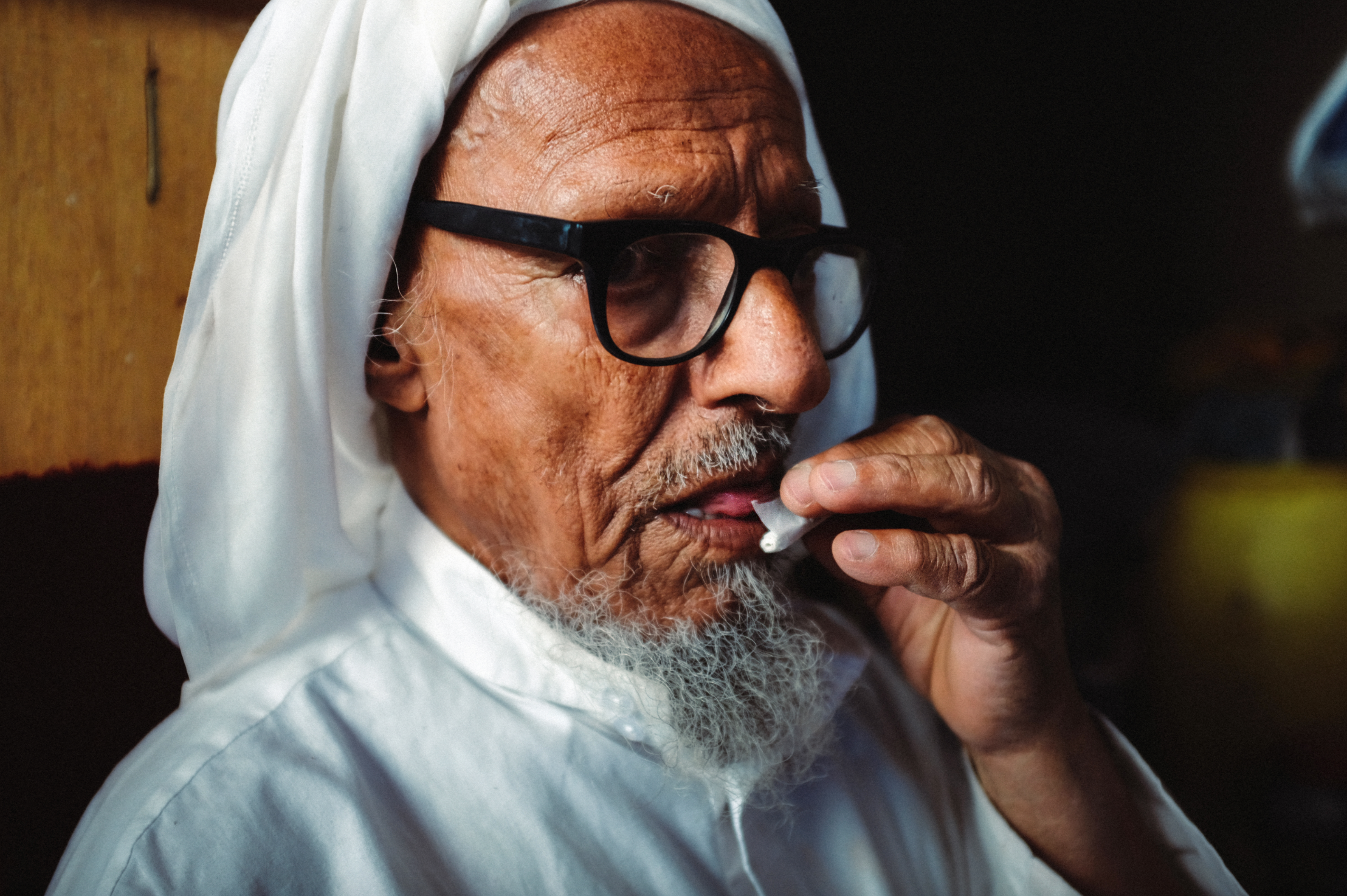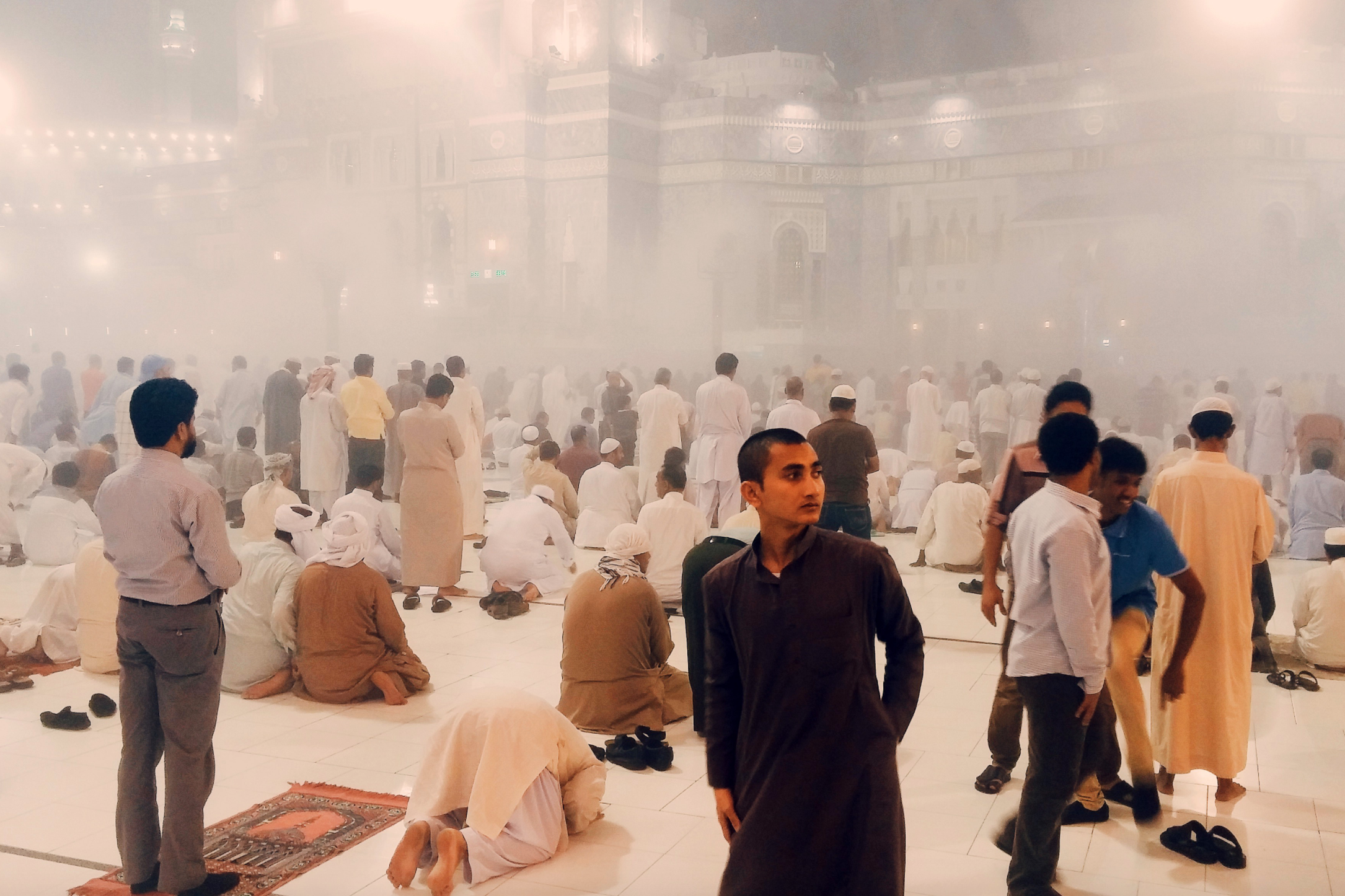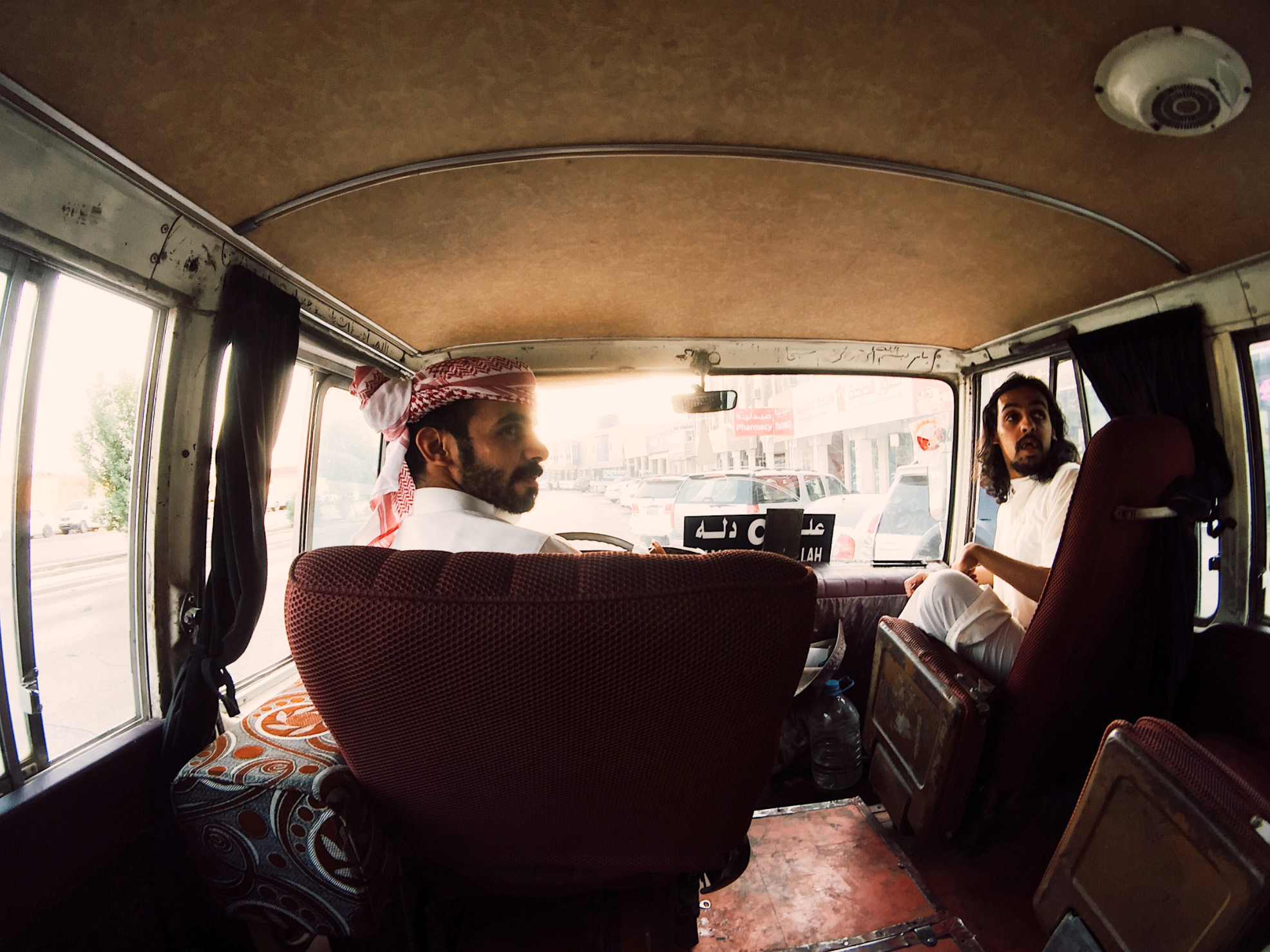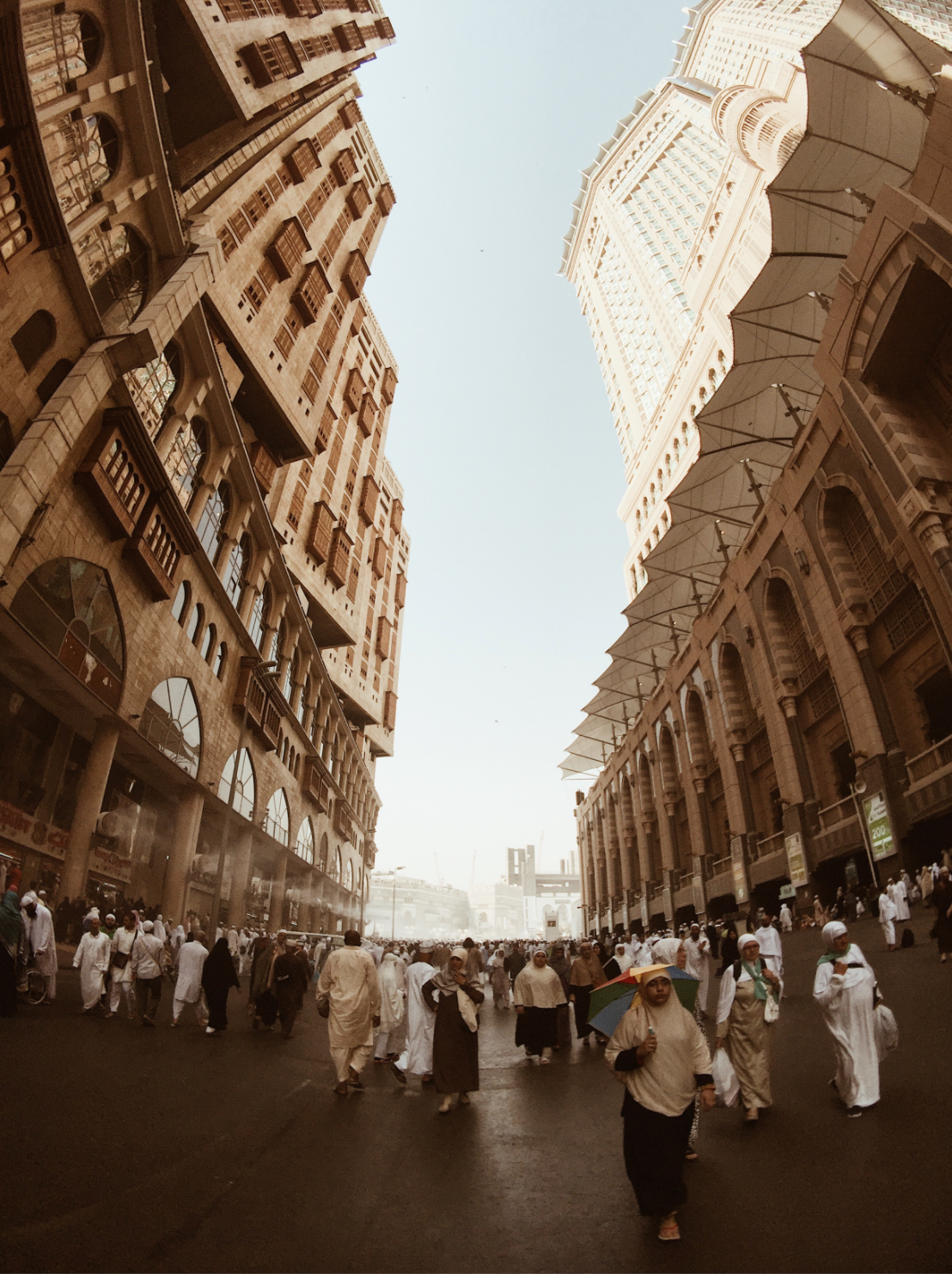Abdulrahman Saleh: Culture and Diversity
Abdulrahman Saleh is a Somali visual artist based in Saudi Arabia. He was born as a refugee in Kenya and was resettled with his family in Riyadh, Saudi Arabia at a young age. After falling in love with photography in his adolescence, he got his first camera in 2012 and has not looked back since.
Abdulrahman’s goal is to document common people's lives and stories of inspiration, with a specific focus on the lives and traditions of expatriate communities on the streets of Saudi Arabia's cities.
He is an award-winning photographer and his work is extremely moving, intimate and human-centred. He develops a unique connection with his subjects and uses photography as a medium to elicit emotions through visual depictions of people, events and everyday life.
Riyadh, Saudi Arabia. A Sudanese man claims a space on a long prayer mat in Riyadh’s Maakal Neighbourhood in anticipation of many worshippers for Eid prayers. Abdulrahman Saleh.
Where did you grow up and how has the changes in Saudi Arabia you’ve experienced throughout your life influenced your photography?
I am originally from Somalia but spent my whole life in Saudi Arabia. Actually, I was born in Kenya to Somali parents as a refugee and then resettled in Riyadh when I was a baby. So I’ve spent my entire life in this city.
Saudi Arabia has changed a lot in the past 10 years. As a photographer, my experience has also been constantly in flux to match these cultural changes in the country. Before, let’s say 10 years ago, people would look at a street photographer with a lot of suspicion and negative feelings. They would never agree to have their photo taken.
But now things have been getting much better for photographers, as people’s attitudes towards photography are changing. Smartphones are everywhere in Saudi Arabia now, so a lot of people are taking photos of themselves, their families and their experiences, so they're more open to letting photographers like me take their photos as well. Photography does not feel so taboo anymore.
Another challenge I face as a photographer is getting my family’s approval and support to pursue this passion. My parents still don't believe you can build a career as a photographer; it’s a traditional way of thinking.
Al Ahsa, Saudi Arabia. Haji Yassin Al-Qattan, a tobacco seller in Al-Kayseri market, puts the finishing touches on a hand rolled cigarette. He imports the tobacco himself from Iraq. Abdulrahman Saleh.
Riyadh, Saudi Arabia. A portrait of a man on the streets of Riyadh. Abdulrahman Saleh.
Makkah, Saudi Arabia. Pilgrims gather for prayers in the Grand Mosque of Mecca. Abdulrahman Saleh.
How did you first get into photography and where does your inspiration come from?
I started falling in love with photography in 2009. I would go online and stare at photographs on the website Flicker all day. I would just go through those photos and stare at them with amazement. I thought to myself: ‘One day I hope to get a camera and be able to go out onto the streets to take these kinds of photographs.’ That day finally came in 2012, when I purchased my first camera.
My inspiration story starts around the end of 2009, before I even had a camera. Back then, I started riding the hatal balda— meaning “town bus”. I would ride this bus from my house to a different neighbourhood for lessons and then from there, I’d take a different bus to my college. So every morning I’d spend one and a half hours on buses, and then when I would finish my lessons I’d take another bus back home. In total, I’d spend over three hours a day looking out onto the streets making various stops on these local town buses.
Instead of wasting all this time doing nothing, I would spend these three to four hours a day in transit listening in on people’s stories and gossip on the bus or looking outside the window at daily life on the streets around me. I was already in love with the idea of photography, so I decided I would like to become a street photographer and tell stories about people’s daily lives in Saudi Arabia.
I rode these buses from 2009 until 2013 on my daily commute. Throughout these years if you think about it, I observed hundreds and hundreds of stories. In 2012 when I finally got a camera, I was inspired to take photos inside and outside the bus. It was almost like a mini-documentary project. And I loved doing it. So much so that even after I graduated I would ride just for fun and take photos.
I kept on documenting bus stories until 2018 when the government decided they would shut down these local town buses because they looked too old and run down. The government ended up replacing all the buses with new ones and destroyed the old ones.
Riyadh, Saudi Arabia. Inside the “town bus”. Abdulrahman Saleh.
Riyadh, Saudi Arabia. A child waits at the bus station. Abdulrahman Saleh.
Riyadh, Saudi Arabia. Kids and their mother stand in a square. Abdulrahman Saleh.
Was your upbringing and background as a Somali in Saudi Arabia significantly different from your peers? Does this have any noticeable influence on your photography in your mind?
So actually, I'm from Somalia, in Africa. But I was born in Kenya, then I came to Saudi Arabia as a baby. I grew up and spent my entire life in the city of Riyadh with my family.
My upbringing was actually quite normal, as much as ay other average person here in Saudi Arabia. I went to public school in the mornings, and then in the evenings to Quranic school. I participated in all the usual ceremonies here like other families, so everything felt normal, nothing too special there.
Riyadh, Saudi Arabia. A reader of the Quran sits in a mosque to study the holy book on the second day of Eid. Abdulrahman Saleh.
Riyadh, Saudi Arabia. A reader of the Quran sits in a mosque to study the holy book. Abdulrahman Saleh.
Riyadh, Saudi Arabia. A shepherd boy. Abdulrahman Saleh.
What have been some of the most emotionally moving places and subjects you have photographed in Saudi Arabia?
I’ve travelled to many different cities in Saudi Arabia— Makkah, Al Madinah, Jeddah, Al Ula, Tabuk, Abha, Jazan and Al Hasa. I love all of them because I’ve gotten different feelings from each one. But the two I fell in love with were Al Hasa and Al Madinah.
One of the most emotionally moving places I have been was seeing Al Ummrah during Ramadan— the annual holy pilgrimage to Mecca. A lot of people gather there and pray to God to help them and give them happiness and the wishes they are seeking. You can see people from all over the world, crying and kneeling to God. It is extremely emotional to witness, for me and for everyone there.
Mount Uhud, Saudi Arabia. A mosque is lit up after sunset in Madina. Abdulrahman Saleh.
Makkah, Saudi Arabia. Pilgrims gather at the Kaaba Doors. Abdulrahman Saleh.
Makkah, Saudi Arabia. Pilgrims walk through the streets of central Makkah. Abdulrahman Saleh.
Makkah, Saudi Arabia. Pilgrims climb on top of each other to touch the holy Kaaba. Abdulrahman Saleh.
What is your favourite photograph you’ve take in Saudi Arabia? What about capturing this moment do you remember?
I don't have a favourite photo, but rather, a whole project that I have been working on. It's called 30 People, and I have not finished it yet. I’ve maybe only completed about 15 percent of the project.
The story behind the project is to document 30 people I worked with for five years. In 2018 I was about to quit my job and in order to save the memories of my time working with these colleagues, I decided to undertake a photography project. I took a photo of each colleague from inside the bus they would ride every day to work.
Then I kindly asked them to do something that makes them happy— drink tea, dance, smoke, whatever they like— and I would document this moment and give it to them as a souvenir of our time together. Most of these colleagues are overseas workers from Turkey, Egypt, Pakistan and India, and after this job, many of them returned to their home countries. So for me, this project had a lot of meaning.


















